The marked changes in electrokinetic potentials of quartz in dodecylammonium acetate (DDA) solutions were postulated to result from the association of adsorbed collector ions into two-dimensional aggregates, called hemi-micelles. The rapid increase in flotation rate of quartz was shown to coincide with hemi-micelle formation.
Micelle Hypothesis
In dilute solutions alkyl ammonium and related salts behave as ordinary-strong electrolytes, but at a certain concentration there is a marked change in physical properties of the solutions, e. g., in equivalent conductance, transport number, freezing point lowering, and viscosity. To account for these phenomena, McBain introduced the concept of micelles, which are aggregates of long chain ions. It is believed that the ionic heads of the constituent ions of the micelle are in contact with water, whereas the nonpolar groups turn away from it and are in contact with each other.
Work must be done to bring these charged polar groups together, but energy is gained (i. e., so-called van der Waals cohesive energy) when hydrocarbon chains are expelled from the water and allowed to associate. For a given polar group, the tendency to form micelles will therefore strongly depend on the hydrocarbon chain length. Theoretical treatments of micelle formation by Shinoda and Phillips and others lead to the following expression for the concentration at which micelles form (the critical micelle concentration or cmc) in aqueous solutions of long chain electrolytes:
CM=Ae (We – n∅’/kT)……………………………………………………………(1)
where CM is the cmc in.mole/liter, A is a constant, and We is an electrostatic free energy term that describes the process of bringing the polar groups together. ∅’ is the cohesive free energy per CH2 group. Stigter and Overbeek have pointed out that ∅’ should be replaced by a term of the form (∅” – TS”) where S” is the entropy per CH2
group associated with the decrease in the number of free kinetic units upon micelle formation. The quantity ∅” is the energy gained by a system when a CH2 group is removed from an aqueous environment. Values of ∅’ (or better, (∅” – TS”) ) have been found to be in the range 1. 0-1. 1 kT.
Since several workers have found that plots of log Cn vs. n are linear the We term-must have a negligible dependence on n.
Hemi-Micelle Hypothesis
In dilute solutions DDA and related ions are found to adsorb as individual counter ions in the electrical double layer at the quartz-solution interface. As adsorption of the large surfactant ions increases, the average distance between those ions adsorbed in the region adjacent to the surface decreases and an additional adsorption force is possible, namely interaction between the hydrocarbon chains due to van der Waals cohesive energy forces between adjacent hydrocarbon chains. This interaction effectively increases the number of adsorption sites at the surface over those that would be possible if the adsorption of the collector were limited to electrostatic adsorption as counter ions in the double layer.
Shafrin and Zisman have discussed the association of adsorbed organic molecules in terms of an increase in “packing fraction”‘ as the adsorbed molecules pack together on the surface. In terms of mechanism, this type of adsorption is more involved and can be interpreted more satisfactorily by the concept of hemi-micelles.
If hemi-micelle formation occurs, ions should be adsorbed individually at low concentrations, but at higher concentrations there should be marked changes in “interfacial parameters” as the adsorbed collector ions associate into hemi-micelles. Figure 1 presents a plot of a number of “interfacial parameters” for the system quartz-dodecyl-ammonium acetate (DDA) at pH 6-7 and 20-25°C. In Figure 1 the following parameters are plotted as a function of the concentration of DDA:
- Contact angle (after Morrow )
- Adsorption density (after de Bruyn )
- Zeta potential (after Fuerstenau)
- Hallimond tube flotation recovery (present work)
For DDA and quartz at neutral pH, hemi-micelle formation occurs at approximately 10 -4 M DDA, as shown by the marked changes in the parameters presented in Figure 1. The expected marked increase in adsorption is accompanied by the concomitant rapid change in the zeta potential. Contact angle and flotation recovery also increase abruptly at the hemi-micelle concentration showing that these phenomena depend primarily on the formation of aggregates of long chain ions at the solid-liquid interface.
The research reported in this paper has been designed to quantitatively interpret flotation in terms of hemi-micelle formation and the van der Waals cohesive energy between hydrocarbon chains.
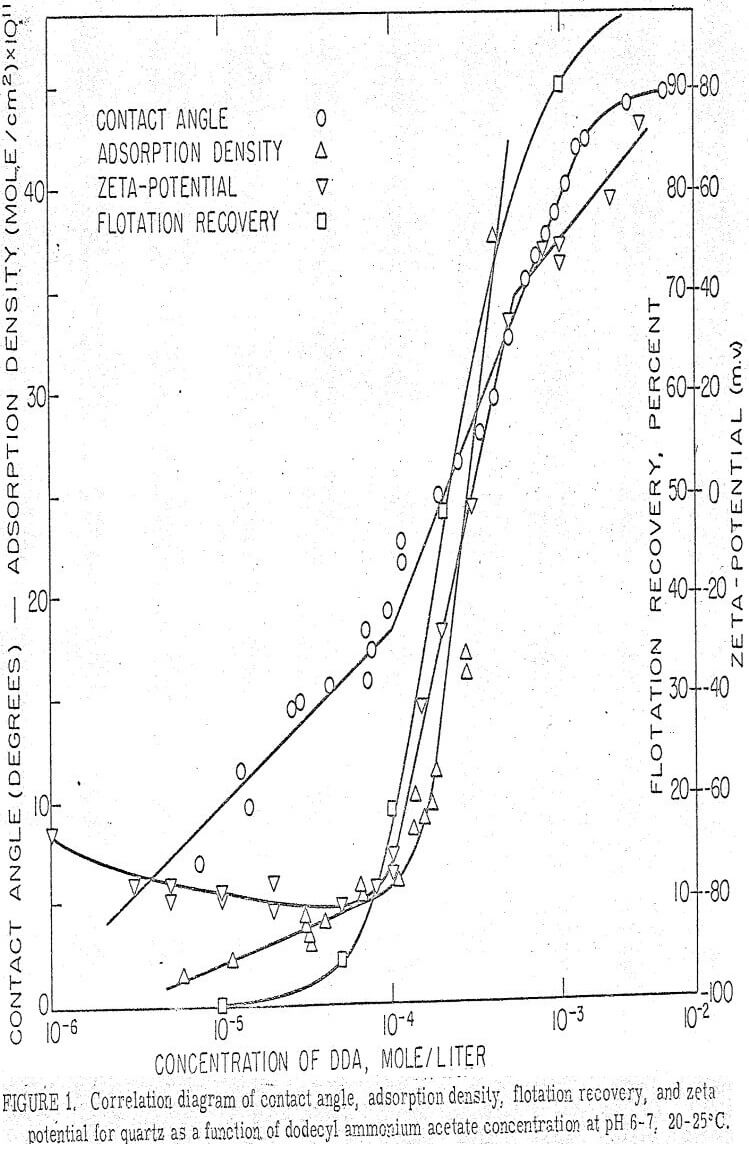 |
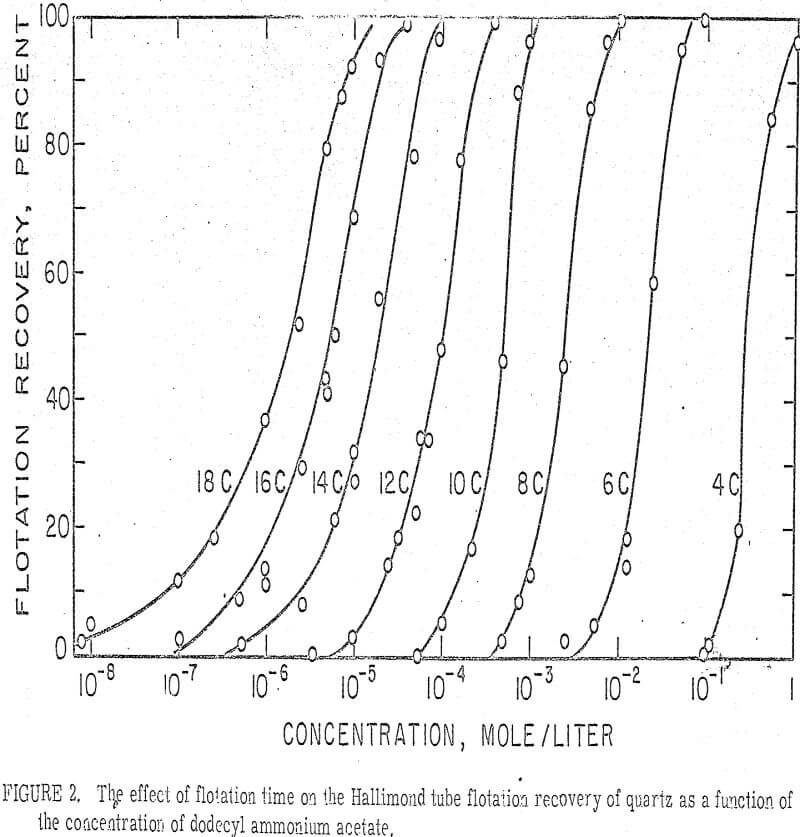 |
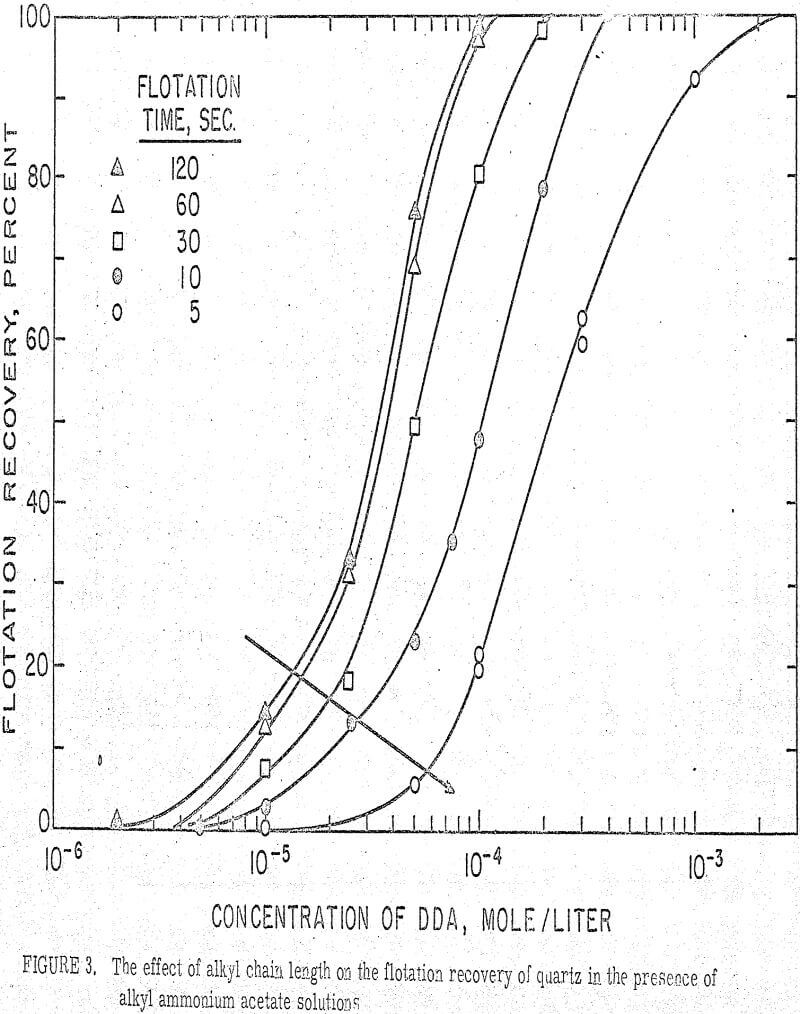 |
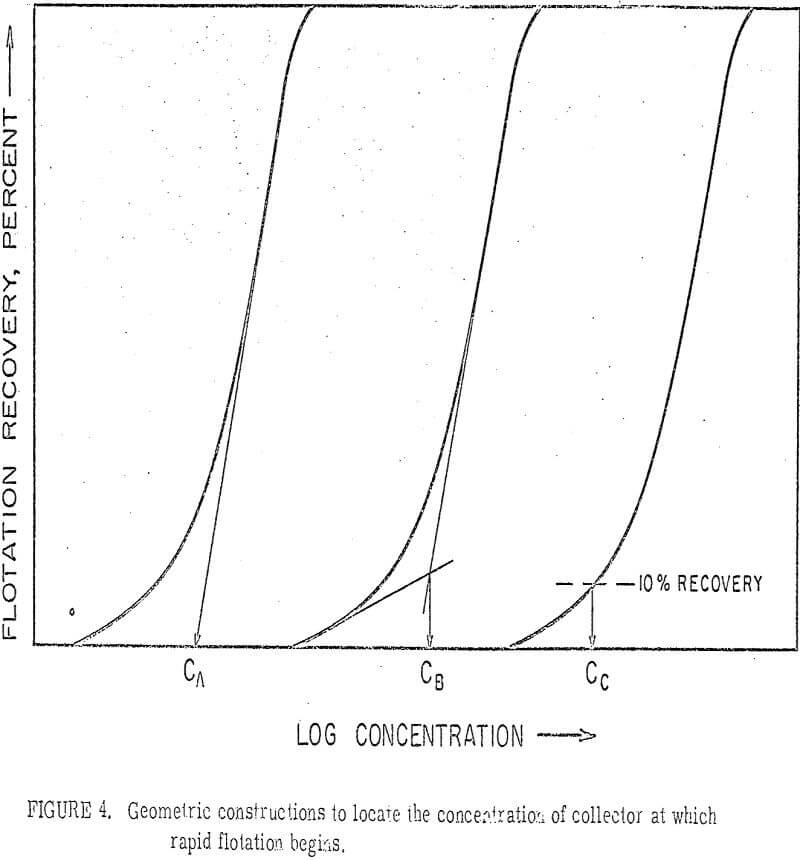 |
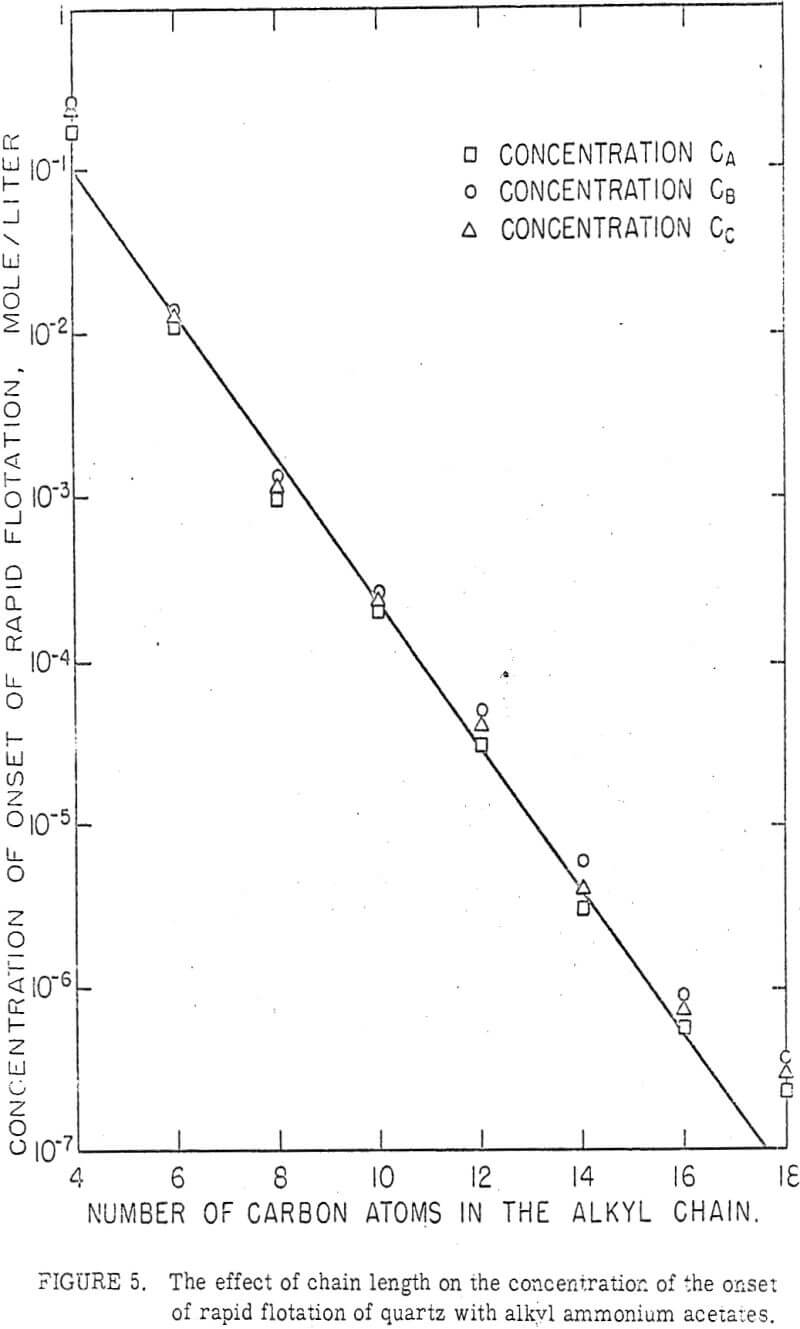 |
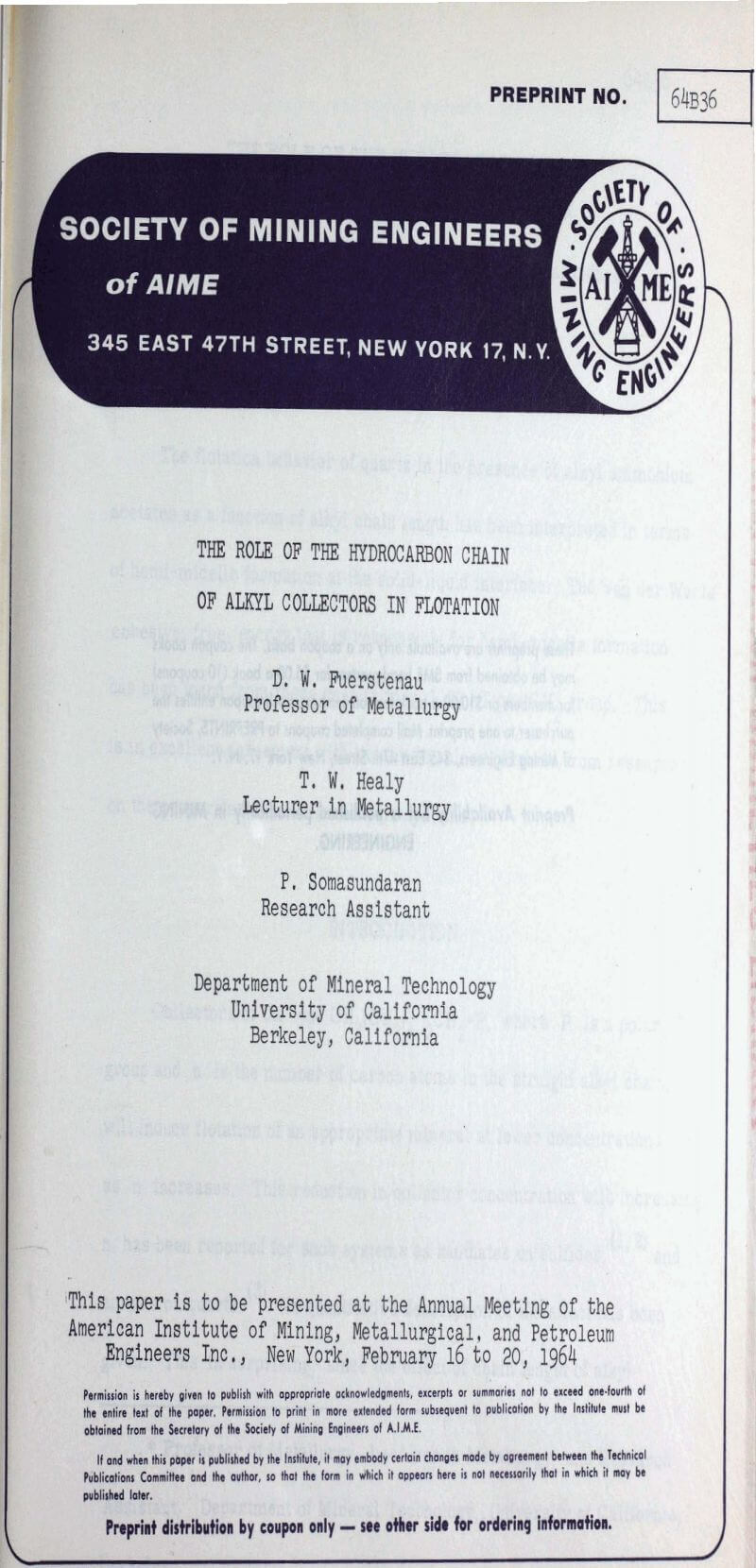 |
